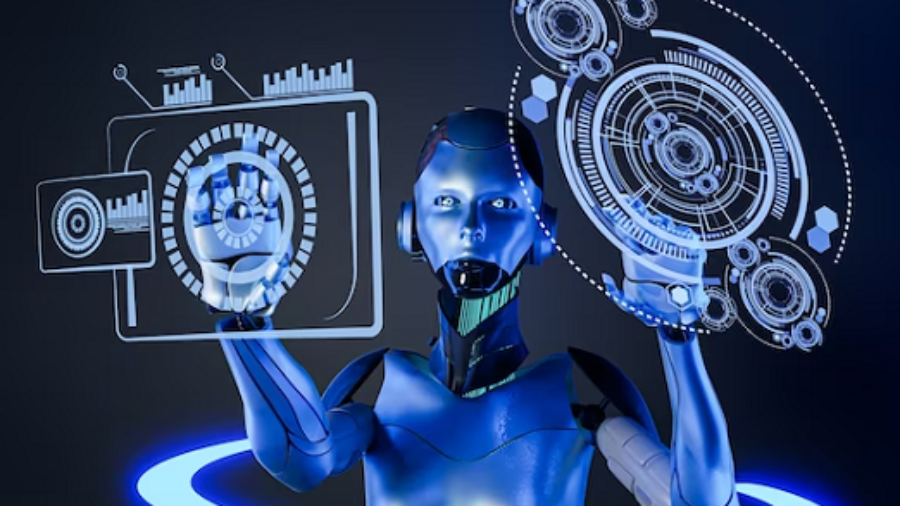Introduction to cybersecurity myths
In our technology-driven society, cybersecurity plays a vital role since digital tools shape our everyday lives. However, many misguided ideas surround this pivotal online safety issue. These misconceptions can expose individuals and companies to cyber risks by potentially causing complacency or a false feeling of protection. This piece intends to illuminate some prevalent cyber myths and dispel them with evidence-backed clarifications. This equips users with precise knowledge and empowers better decision making regarding cyber hazards.

Why debunking cybersecurity myths is important
It is extremely important that we clarify inaccuracies regarding cybersecurity, as misunderstanding the realities can enable harm. Many beliefs persist that do not reflect how cybercriminals operate today, potentially resulting in inadequate protection of people’s information, finances, and privacy. By addressing fallacies, we ensure individuals and groups accurately comprehend potential risks and safeguard themselves appropriately. When myths go unchecked, sensitive materials and resources could lay unguarded against those seeking illegal access. Let us have an open dialogue to replace fiction with fact, empowering all with real understanding of threats and how best to shield against them. In doing so, we build a web environment of trust and well-being for our communities.
While it may seem insignificant individuals are not likely targets of cyber attacks, the truth is digital dangers exist for all users. Even those without notoriety could find themselves victim to hackers or scammers on the prowl.
While it is easy to assume that cybercriminals focus solely on prominent targets, any individual with online access could become a victim. A widespread misunderstanding poses serious risks, as attacks often prey on average users. Hackers endlessly search for weaknesses to exploit for personal advantage, sometimes deploying deceitful techniques. They may send fraudulent emails containing viruses, malicious software, or ransom demands intended to lock devices until payment. No person is immune simply due to obscurity or lack of status. Protecting virtual safety demands vigilance from all, as even minor neglect could enable serious theft of information or disruption of devices. A holistic approach embracing individual precautions best discourages criminal plans relying on human vulnerabilities and forestalls damage to any victim.
Myth #2: “Antivirus software is enough to protect me”
Despite the importance of antivirus software in cybersecurity, it does not provide absolute protection. Cyber risks continuously change as new malware variants emerge daily. Antivirus programs can only address recognized issues and may fail to prevent unidentified weaknesses or sophisticated offenses. It is imperative to keep antivirus up-to-date and use additional security practices, like applying all software fixes, employing complex passwords, and exercising caution online, to supplement its capabilities.
Believing that strong passwords alone ensure protection is a common misunderstanding. While using complex, unique passwords for each account reduces some risks, it does not make your online presence
Maintaining robust passwords is a significant part of cybersecurity, however depending exclusively on them is insufficient for remaining protected. Cyber lawbreakers utilize numerous strategies, like brute-force assaults or phishing tricks, to achieve unauthorized access to records. It is vital to employ novel and intricate secret keys for every digital record, empower multifaceted validation at whatever point conceivable, and routinely refresh passwords. Additionally, people ought to be wary about imparting touchy data on the web and stay away from turning into a casualty of societal designing strategies.
Myth #4: “Cybersecurity is only a concern for big companies”
Rephrase
While many believe cybersecurity risks primarily impact large corporations, small businesses and individuals also face serious threats from cybercriminals. Contrary to widespread assumptions, these groups may experience even greater vulnerability due to fewer security protections commonly in place. All digital users, regardless of organizational size, should comprehend potential dangers and proactively safeguard themselves. Implementing robust security processes, consistently upgrading programs, educating staff on recommended cybersecurity behaviors, and relying on trustworthy security products can help shield smaller entities from risks. Rather than reacting to security incidents, a wiser approach centers on prevention through basic yet powerful precautions.
Myth #5: “I can spot phishing emails easily”
There is a need for vigilance when receiving emails due to how sophisticated phishing attacks have become, making it difficult even for technology-experienced individuals to differentiate between genuine and harmful emails. Cybercriminals frequently employ social engineering techniques intended to deceive users into clicking dangerous connections or disclosing sensitive data. They might impersonate respected institutions, utilize pressing terminology, or generate believable email templates. Therefore, it is crucial to apply care when obtaining emails, even from apparently trusted sources. Confirm the sender’s email address, inspect for grammatical mistakes or dubious connections, and never offer individual or financial information without validating the legitimacy of the demand.
Debunking common cybersecurity myths – The truth behind each myth
Moving forward, we will dive deeper into unpacking certain prevailing online misconceptions and instead promote validated knowledge to foster security. Each belief will be evaluated based on facts and research in order to accurately convey beneficial strategies for protecting oneself on the internet.
Believing oneself to not be a target of cybercrime could be a mistake. While some individuals may seem less enticing to cybercriminals than others, personal information has value regardless of who possesses it. A criminal seeks
It is important to recognize that cybercriminals aim wide in their attacks, threatening any individual with an online presence. They opportunistically take advantage of weaknesses without bias, attempting to obtain personal details, financial records, or even control over devices. By making cybersecurity a priority, people can notably lessen the chances of becoming prey to digital assaults. This incorporates consistently upgrading programs, employing robust and unique passwords, viewing emails and links with skepticism, and remaining educated about evolving security issues.
Myth #2: “Antivirus software is enough to protect me”
When considering cybersecurity defenses, relying solely on antivirus programs would be misguided. A multi-faceted strategy is paramount. Maintaining updated software, utilizing firewalls, generating strong passwords, exhibiting prudent web behaviors, and vigilantly monitoring for phishing are all important aspects. However, regularly saving critical information is equally imperative. This comprehensive approach helps minimize potential damages should attacks occur, unlike single-factor protection.
Believing that robust passwords alone ensure protection is a misconception. While passwords serve as important gatekeepers of information, modern cyberthreats have grown exceedingly sophisticated.
Password strength is certainly important for cybersecurity. However, passwords alone cannot stop all unauthorized access attempts. Hackers have many techniques to obtain logins, such as phishing scams, keystroke trackers, and brute force cracks. In addition to using robust, one-of-a-kind passwords, people ought to activate multi-step authentication when available. This adds an extra layer of protection by necessitating a secondary validation step involving something like a fingerprint scan or single-use code. Careful internet users understand that security requires layering defenses.
Myth #4: “Cybersecurity is only a concern for big companies”
Cybersecurity protections are crucial for all, whether an individual or large enterprise. Small companies and private citizens may seem like easier targets to cyber threats. However, establishing strong security practices, performing consistent risk evaluation, educating workers on recommended protocols, and using dependable tools can help shield these groups. Citizens also need diligence, keeping devices and programs current, and discretion sharing details online. Regular security reviews let small businesses identify weaknesses before others, then take steps to reduce vulnerabilities. By making safety a priority through low-cost plans and awareness, individuals and companies of any size can better defend themselves from modern risks. Teamwork across sectors allows progress in this shared challenge.
Myth #5: “I can spot phishing emails easily”
Deceptive emails have grown progressively complex, making them challenging to identify with a cursory look. Cyber wrongdoers utilize an assortment of techniques to craft apparently genuine emails. It is crucial to inspect emails thoroughly, focusing on the sender’s email address, the language utilized, and any questionable connections or attachments. When uncertain, people ought to interface specifically with the association utilizing confirmed contact data to affirm the legitimacy of the email. Preparing in cybersecurity mindfulness can assist people with recognizing regular phishing strategies and stay away from becoming casualties of these tricks.

The consequences of believing cybersecurity myths
Cybersecurity misconceptions can have grave repercussions. Relying on inaccuracies breeds complacency, an artificial sense of safety, and neglecting needed safeguards. Cybercriminals exploit these weak points to gain forbidden entrance to personal details, monetary means, or even control over electronics. The impacts of a cyber assault vary from monetary loss to damaged recognition, pilfered individuality, and potential legal troubles. It is crucial staying conscious and educated about actual dangers and employing suitable cybersecurity tactics to soften these possible outcomes.
How to stay informed and educated about cybersecurity
Maintaining awareness and knowledge regarding cybersecurity necessitates continuous learning. It is imperative to keep abreast of recent threats, developing patterns, and recommended strategies. Various avenues exist to remain informed:
Rephrase
- Staying informed about the latest in cybersecurity is important. I recommend following reliable news outlets and blogs that consistently provide factual,
- Consider engaging with cybersecurity education opportunities to strengthen your understanding and abilities. Various training
- Connecting with cybersecurity networks online provides opportunities to gain knowledge from others in the field. Many professionals participate in online communities and forums where Connecting with cybersecurity professionals active on social networking sites presents opportunities to gain useful perspectives and obtain answers. Experts utilizing these platforms
- It is important to routinely check your security procedures and modify them if needed. Make sure to use strong, unique passwords for all accounts and turn on extra verification steps like multi-factor authentication. Also, keep any software or apps on all
Rephrase
Staying up-to-date on cybersecurity allows individuals to make well-informed choices and take steps to safeguard their digital lives. By keeping abreast of the latest cyber threats and defenses, people can equip themselves to make judicious decisions and implement suitable protections for their online activities. Remaining
Rephrase
Conclusion: Dispelling Common Misconceptions About Cybersecurity for a Safer
Correcting misconceptions regarding cybersecurity is indispensable for crafting a safer digital setting for both individuals and organizations. Trusting in these fallacies can have disastrous consequences, rendering personal details, sensitive files, and economic assets defenseless against cybercriminals. By discussing prevalent misjudgments and furnishing evidence-based clarifications, people can achieve precise knowledge regarding cybersecurity most suitable practices. It is crucial to prioritize cybersecurity, remain learned about the genuine dangers, and actively take steps to safeguard oneself and others in the virtual sphere. Only by rectifying myths and distributing correct information can we ensure a safer and more secure online experience for all.











